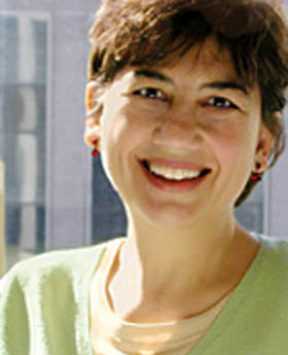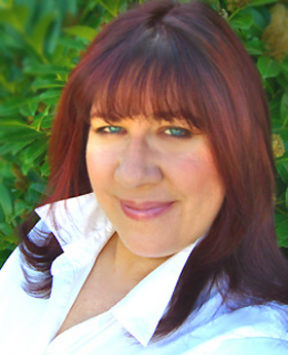Your Website may look beautiful to your eyes, but what about to the eyes of a search engine? If you can understand how a search engine sees your site, than you can design the site or make the necessary changes so that your site will get a higher ranking in search results.
Pictures versus text
Search engines do not see pictures or other graphics. If you have transformed some very important text and keywords into not text, but an image, a beautiful multi-colored gif for example, the search engine will not index these keywords. It may look like text to you, but not to a search engine. You have to weigh the relative importance of good images against the need to give the search engine something to chew on. Usually a balance has to be struck.
At one extreme are pages that contain only images. For example, you have an entry page with a beautiful image of the ocean and a beautiful sunset with one word saying Enter. It may be dramatic looking, but it is not very interesting for a search engine. Similarly sites that are only Flash images dont give anything for the search engines spider (robotic gathering tool) to gobble up and put into the index. If you want to use Flash, consider making a hybrid page, one that has some elements, such as informative text, of normal HTML and a section in Flash. Keep this in mind and make sure that your important concepts and keywords do appear on your pages in a text format.
Alt tags
Since pictures and graphics are fun and do help convey your Websites message, there is something that can be done to optimize them for search engine recognition. You can put an alt tag (alternative text) on each image. The search engines will read this text and index the words you have entered. If you have your companys logo at the top of the page, you can write the alternative text Starbucks Coffee: Best lattes in Tacoma for instance. Put your mouse over the logo image and you can see the alt text appear. Whenever you have an image, take the opportunity to put an alternative text tag. But remember that, although the alternative text tag is indeed indexed by the search engines, it is not given as much importance as other text elements.
Use header tags
If you really have some important text that you want emphasized, then use the heading tags, h1, h2, h3, h4 etc, and make use of bold text. These heading tags and text rendered in bold font are given more importance by search engines than other text because headings are thought to indicate the main concepts of your page. The heading tags may not look as nice as a gif image, but if they contain important keywords then whatever you think you may lose in beauty by discarding them, will be returned to you in better ranking positions in Internet searches for your important keywords.
Text placement
Suppose you have put your companys logo at the top of the page. Beneath it you might put some text reading Tacoma: home of the biggest model railroad display. If Tacoma and model railroad are important keywords for you then you have started off your page very well. In fact, some search engines use the first paragraph or phrase as the description that is shown in search results. So if the first paragraph or first phrase really says a lot and is attractive it may entice someone to visit your page.
Getting a top result in a search engine is one thing, but someone has to think that your page is interesting enough to visit if they are going to click on it, and the description shown by the search engine may be the deciding factor determining whether they click through to your page or to your competitors page.
How search engines read
Search engines do not see, or rather, read pages in the same way that our eye sees the page. Recently I saw a Website in the first search engine results for that site. I saw the words Choose your language as the description. The search engine took a phrase from the navigation bar on the left hand side of the page, where surfers were invited to choose which language version of the site they wanted to see. This happened because search engines have to go through the table structure of the site. In order to align the different elements (text and pictures) of a site, designers often divide the page into tables. If a site is divided into two vertical tables, one for the left hand navigation and one for the body, the spider will first read everything in the table on the left before going to the table on the right.
You can take advantage of this knowledge of how search engines read by putting a pithy, keyword laden descriptive phrase in the left hand column just above the navigation elements. Make sure that your important phrases are in places where the spider will see them before they reach other less important phrases. If the table structure on your page is not giving the right picture to the spider, then you should make the necessary modifications to correct the problem.
Text is heavier than html
A good rule of thumb is to limit the fancy code work. Spiders are not to the point they really like eating out of the norm code. Stay away from heavy flash and java script. There is little reason to have them that I can see – they will rarely help a site and stand to hurt it greatly due to many factors most people dont appreciate. Search engines distaste for java script is just one of them.
Simple is cool
Arrange the site in a logical manner with directory names hitting the top keywords you wish to hit. Dont clutter and don’t spam your site with frivolous links like best viewed or other junk. Keep it clean and professional to the best of your ability. Learn the lesson of Google – simple is cool and simple is what surfers want.
Dana Greenlee is co-host of the WebTalk Radio Show, a University Place-based radio and Webcast show featuring technology news and interviews.
WebTalkGuys Radio
This Saturday, July 17, WebTalk Radio show guests include Netscape.coms VP and General Manager Steve Owens, to talk about their new dial-up ISP service. Also, discussion will be about how and why city or community owned networks are building community wireless hotspots and how these free Internet access areas are helping build economic development. Rob Flickenger, author of Wireless Hacks and Building Wireless Community Networks and Matt Westervelt, the founder of SeattleWireless.net, will offer advice on how cities can build their own large hotspots. Flickenger and Westervelt are also co-founders of Seattle-based wireless network equipment supplier Metrix.net. WebTalk Radio is heard at 11 a.m. Saturday on KLAY-AM (1180) and 10 p.m. Tuesday on KVTI-FM (90.9).






